Mundo4x4Casa
West slope, N. Ser. Nev.
Years ago I put a cone clutched, Power lok, limited slip pack in my 35 spline Dana 80 rear differential. All in all i still like it for what I need it for: driving my TC in snow, sand, and mud: not rock crawling or locking the axles straight across. I"ve had many different traction aids over the years on 13 4WD's, from hard core Air Lockers and Detroits, to simpler and less useful Trac Locs. Over the last couple years I upgraded the whole front end to include Mosier 35 spline axles, all the way across; Dana 70 inner and outer axle parts; Locking hubs; unit bearing delete; front axle disconnect delete; new Gen IV steering parts and TRE's; a 6" lift 4-link set up (on a 3"lift front end, effectively locating the axle 1-1/2" forward for improved fender clearance); new rubber and upgrade bushings on all front end parts; and finally a Detroit/Eaton True Trac, torque biasing, gear driven limited slip differential. No clutches.
I waited for some snow last fall and winter and had the camper off most of the winter so I could not extensively try out the new traction aids with the weight of the TC on the rear axle. What time I did have reinforced my opinion that I chose wisely. I was in deep snow with the TC, all wheels churning away, as advertised, keeping me in the forward motion mode. Especially the front axle pulled very well. I was afraid it would detect the wheel with the most traction and deliver it there, thus causing a 'rolling' side to side traction, but none appeared. The wide super single had the same deflection as the narrower front tires, even with more weight on them. See the footprint in the sand below.
We are just back from a family of 8, 8 day trip to 'sand country' on the Oregon Coast. I did get the loaded, 10,500 pound TC into various grades of sand. I really did not have time to try different deflations, since we were to sleep in the thing every night but rolled right over the
1. hard pack sand
2. blow sand
3. dune sand
4. wet sand
without lowering the pressure. I'm impressed with it's full pressure sand running, even in blow sand, as the same all four wheels just kept churning away. I cannot attest to the lower pressure running this time because I did not have the space to bring my 20 pound CO2 tank along. Some pix:
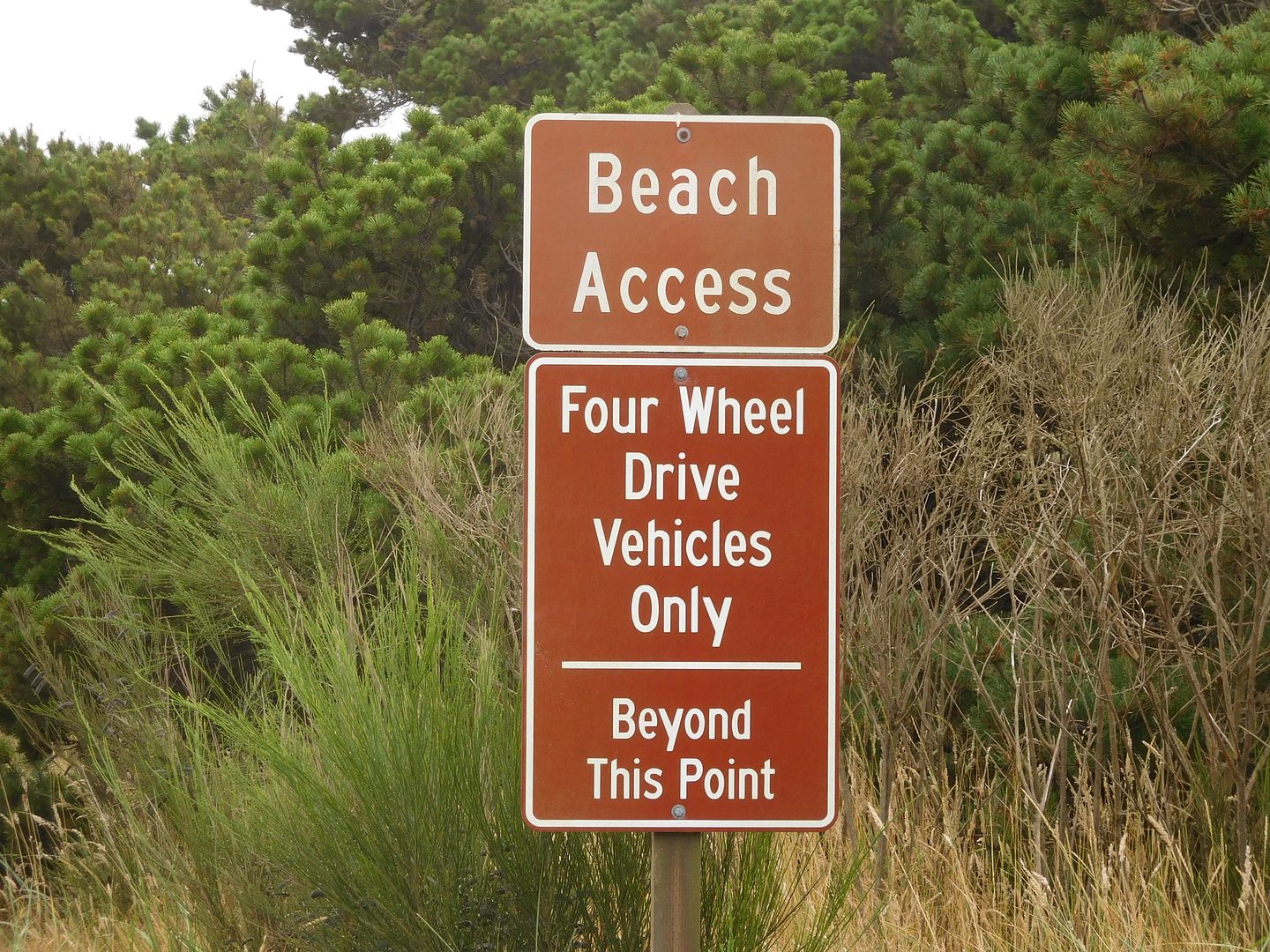
The tracks on the left are mine going the other way. The fronts seemed to sink in more, maybe because they had more of a mud tread:
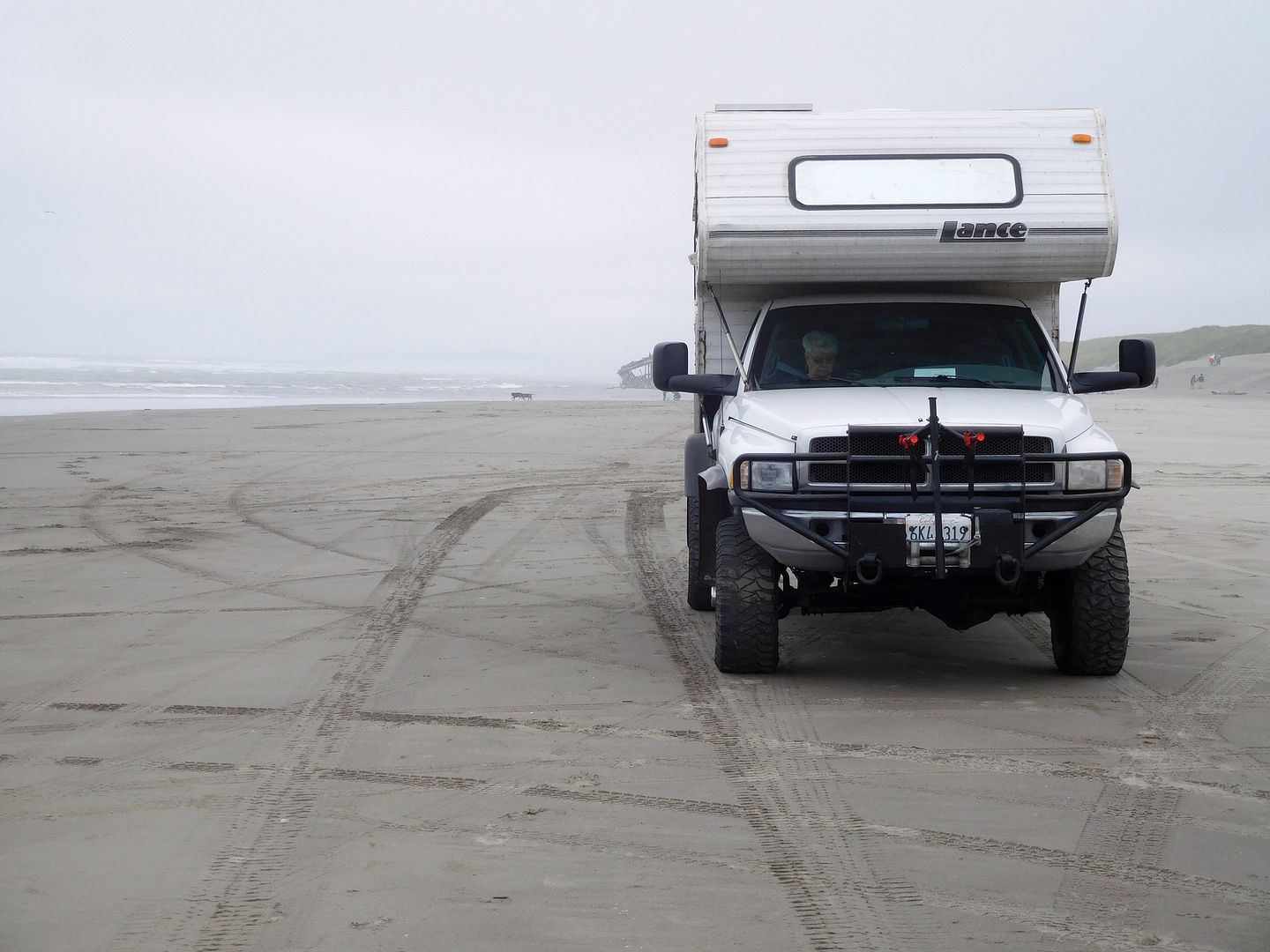
That object in silhouette to the rear is whats left of a British ship that went aground in 1906:
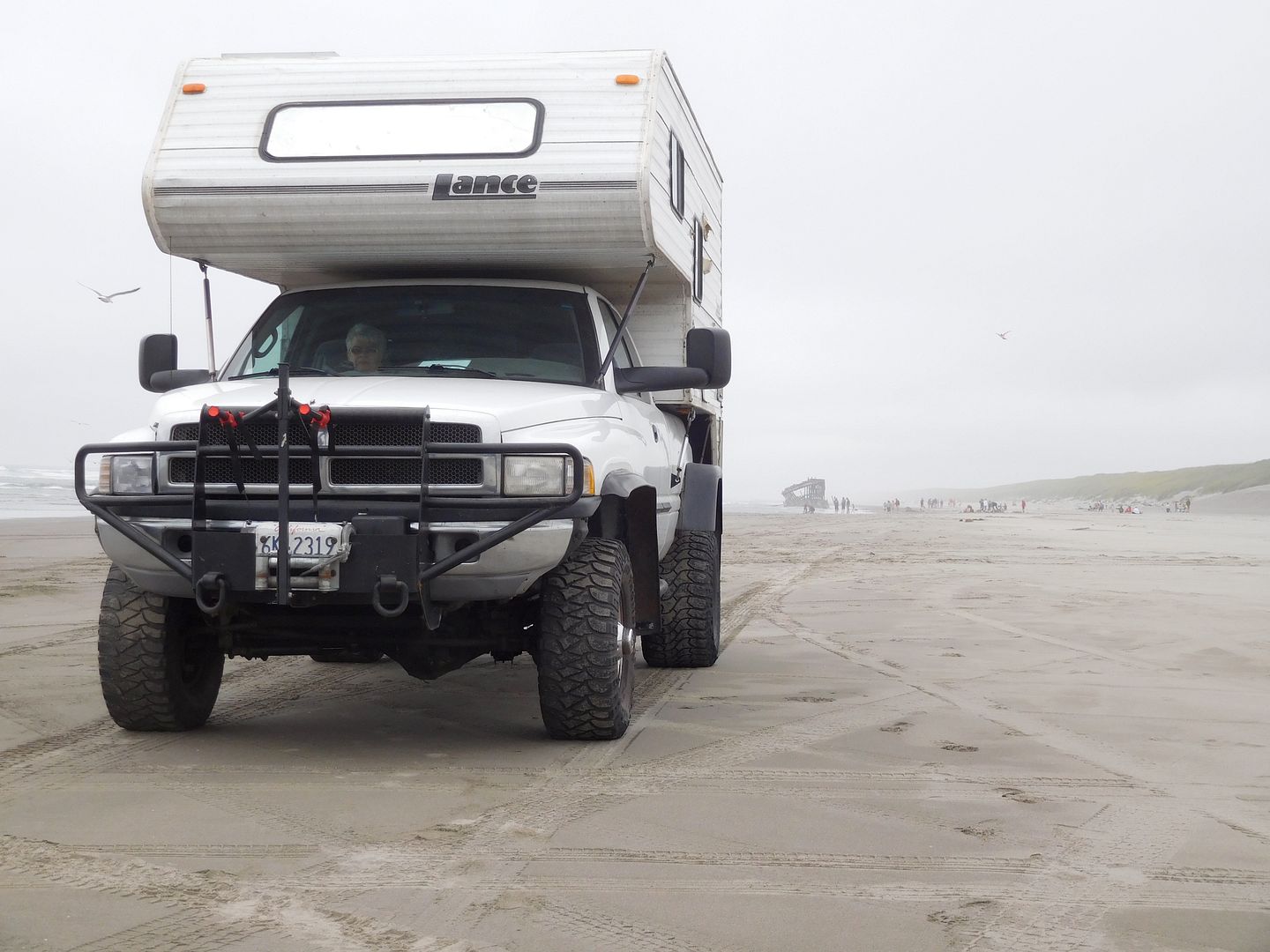
Much of the sand to the right in this pic is blow sand, as the wind seems to be always blowing here: Once you get into it without deflating, you must use more pedal to dig yourself forward but it kept moving forward:
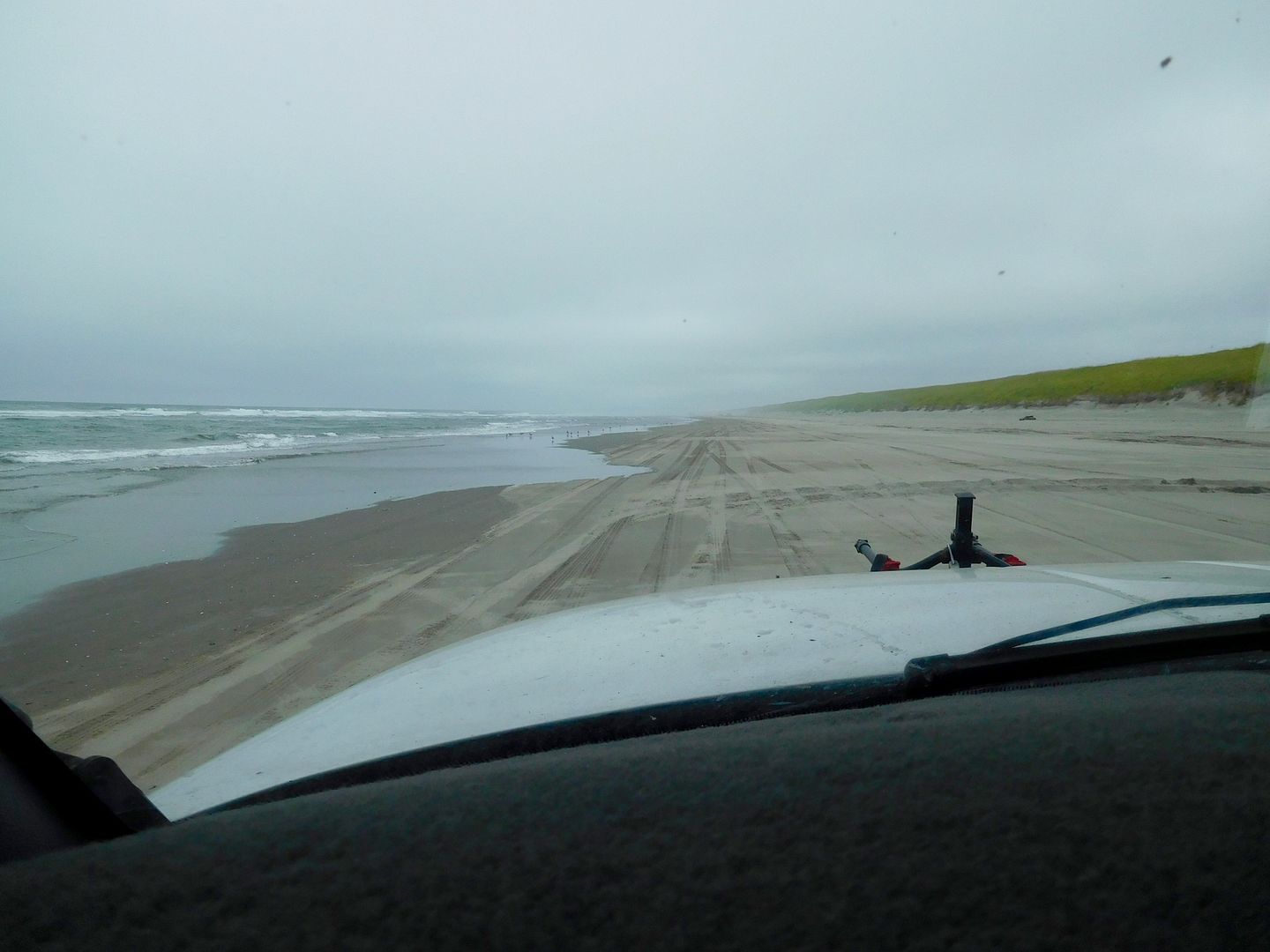
Here's a pic on the Lost Coast at the entrance to running on the beach.
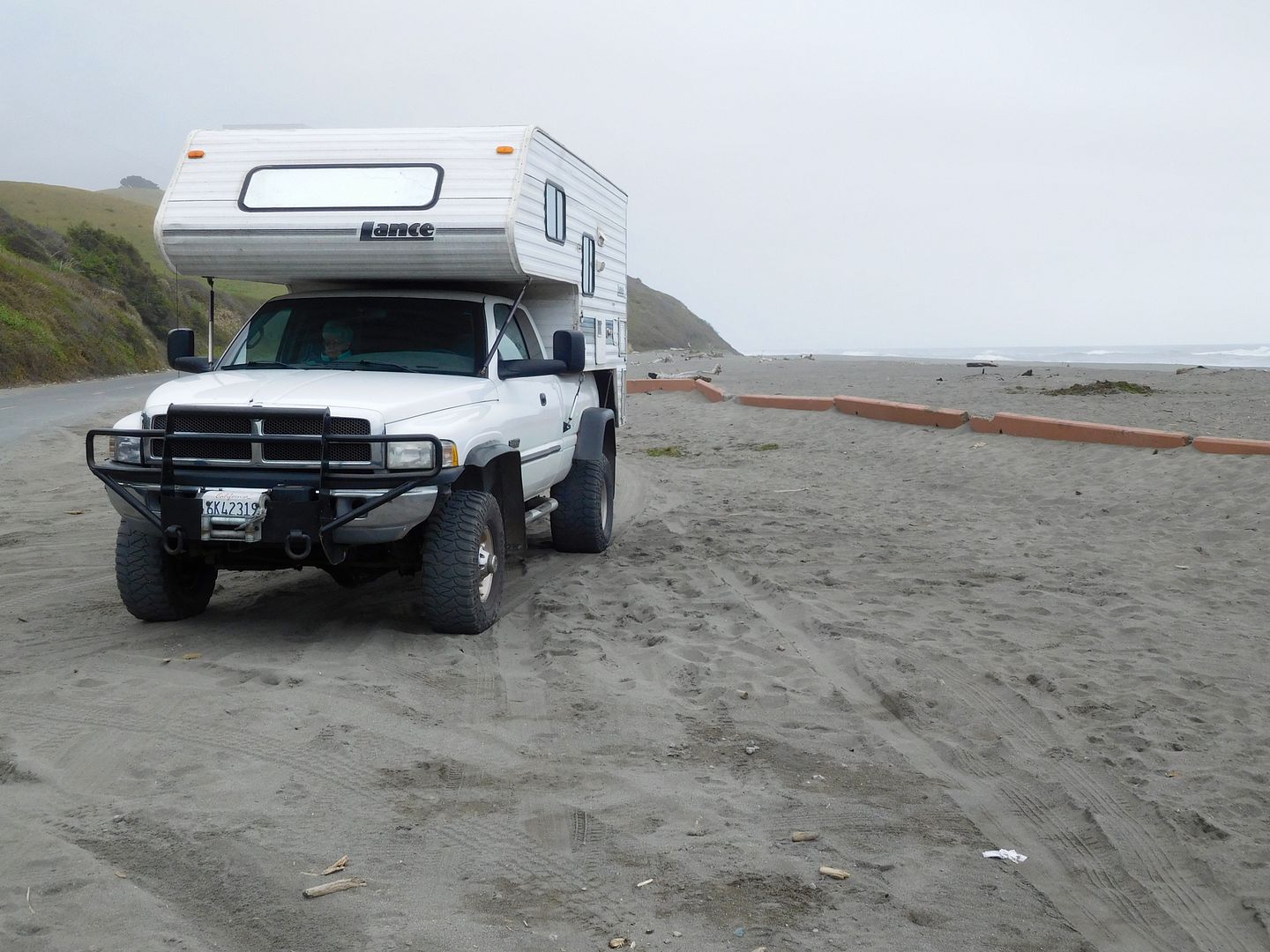
Alright, that's enough.
jefe
I waited for some snow last fall and winter and had the camper off most of the winter so I could not extensively try out the new traction aids with the weight of the TC on the rear axle. What time I did have reinforced my opinion that I chose wisely. I was in deep snow with the TC, all wheels churning away, as advertised, keeping me in the forward motion mode. Especially the front axle pulled very well. I was afraid it would detect the wheel with the most traction and deliver it there, thus causing a 'rolling' side to side traction, but none appeared. The wide super single had the same deflection as the narrower front tires, even with more weight on them. See the footprint in the sand below.
We are just back from a family of 8, 8 day trip to 'sand country' on the Oregon Coast. I did get the loaded, 10,500 pound TC into various grades of sand. I really did not have time to try different deflations, since we were to sleep in the thing every night but rolled right over the
1. hard pack sand
2. blow sand
3. dune sand
4. wet sand
without lowering the pressure. I'm impressed with it's full pressure sand running, even in blow sand, as the same all four wheels just kept churning away. I cannot attest to the lower pressure running this time because I did not have the space to bring my 20 pound CO2 tank along. Some pix:

The tracks on the left are mine going the other way. The fronts seemed to sink in more, maybe because they had more of a mud tread:

That object in silhouette to the rear is whats left of a British ship that went aground in 1906:

Much of the sand to the right in this pic is blow sand, as the wind seems to be always blowing here: Once you get into it without deflating, you must use more pedal to dig yourself forward but it kept moving forward:

Here's a pic on the Lost Coast at the entrance to running on the beach.

Alright, that's enough.
jefe
